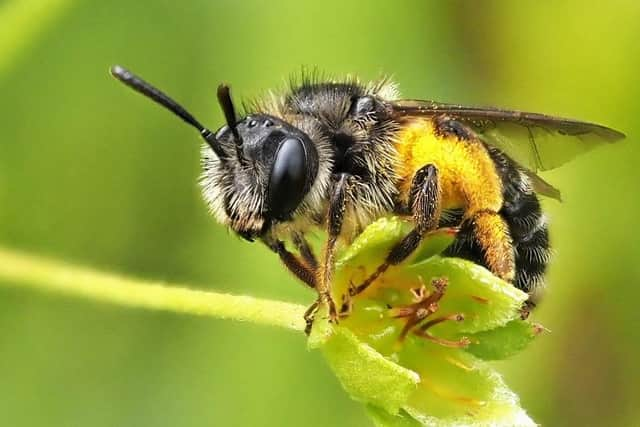York firm works on AI-driven platform aiming to save rare bee species
The small, black, solitary Tormentil mining bee, known for its distinctive hopping motion as it flies between flowers, is codependent on just a single type of flower - Tormentil.
The Species Recovery Trust’s project to monitor and protect the rare Tormentil mining bee is focused on the York Heathlands and North Yorkshire Moors. This species of bee has been in drastic decline over recent years and has been lost from 50 per cent of its former sites since the 1970s.
Advertisement
Hide AdAdvertisement
Hide AdVicky Wilkins from the Species Recovery Trust said: “The Tormentil mining bee, a national conservation priority species, has been lost from over half of its habitat since 1970s. Using this new technology we hope will be a game changer in helping us improve identification of areas for habitat creation, as well as restoring existing sites. This will mean we can work to better provide the right habitat for and ultimately save these charismatic little bees from extinction.”


Using AgriSound’s bioacoustic listening Polly system, and its new, specifically developed algorithm, new data is allowing the health and activity of the Tormentil mining bee to be accurately monitored enabling the Species Recovery Trust to deploy the most appropriate interventions and care for this rare and endangered species of bee.